When every nickle and dime matters, getting the utmost out of your investment is often a nerve-racking enterprise. Each aspect needs to be evaluated, weighed and decided. Needs usually veto wants, and compromises are made to satisfy both parties. While not everything from Column A can be had, the entirety of Column B is equally piecemealed. Of course, for those with the means of making a purchase solely upon passion, not so much. With a wave of a checkbook or plastic credit card, seemingly whatever your heart’s desire can be yours.
Sea-Doo’s 2014 GTR 215 is exactly targeted for those in the first group (although, all are welcome to it). The lowest entry in BRP’s Performance musclecraft lineup, the GTR is a skillfully balanced option for those looking for seat-of-your-pants thrills while not exhausting the family budget. The GTR is also a primed candidate for aftermarket modification if the temptation to tinker becomes too much to resist (but more on that later). In its showroom stock form, the 215-horsepower GTR is possibly our personal favorite machine from Sea-Doo, and not for the reasons you might think.

Seemingly unchanged since it’s introduction in 2011, the current 2014 model remains in its original black, orange and white livery. As you might’ve seen, the 2015 GTR 215 received a whole new retina-melting yellow, red and black repaint. If the new look is a little too garish for your tastes, you’re in luck as dealers reported surprisingly disappointing sales of the centrifugal-supercharged, Rotax-powered model given the craft’s versatility. To us, this only means that too many have passed up one of Sea-Doo’s best “in between” segment runabouts.
Based upon the Swiss Army-knife GTI platform, the GTR is still plenty of watercraft, weighing in at 799 pounds (dry weight) and running 132.6-inches long and 48.5-inches wide. Even with such a tight layout, the GTR ekes out 30.8 gallons of storage thanks to an ample glovebox and large bow stowage. The Performance Group LCD digital dash is highly visible and legible at nearly any speed, flanked by black-faced analog dials only adding to the GTR’s sporty appearance. One big highlight: the handlebar toggles are some of the most responsive in the industry – and we mean it.

The steering is fixed (no tilt option) and single bench seat removes completely and features attractive orange piping. The saddle is thankfully pinched at the knees and lightly bolstered. The footwells are deep and wide and feature foam matting with molded “Sea-Doo” tread. A large padded swimstep is wide and sloped, making boarding easy, although a folding swimstep would have been appreciated in deep water boarding.
At speed, the GTR tracks impressively true in smooth to moderate chop. In larger surf, the GTR can put up a struggle if you’re not paying attention. At cruising speeds, captaining the GTR is effortless and immensely enjoyable while smoothly carving along the shoreline. Although nowhere the turn-and-burn handling of the RXP-X, the GTR greedily snaps in hairpins and sharp S-turns. The steering is intuitive and clearly communicates through the handlebars where it wants to go.

Propelling the GTR to its 68.2 maximum speed is a supercharged and intercooled 215-horsepower 1,503cc Rotax 3-cylinder four-stroke. Cooled through Sea-Doo’s closed-loop system, the tried-and-true 215HP package has been around for nearly a decade and has definitely earned its stripes. The iTC system manages to squeeze out a bit more fun with Sport mode engaged, leaping from a standstill to full plane in a couple of seconds. Throttle response is sharp and trigger resistance is enough to fool your hand there there’s no cable connecting your finger from the throttle body.
We spent a couple of days with the GTR 215 and found ourselves playing more than actually working (it’s sometimes a very blurry line n this line of work). Day Two was spent with the GTR almost entirely in ECO mode, and despite a tank full (nearly 17 gallons despite the stated 15.9 max), we ticked nearly 70 miles of riding with still a pair of bars on the gauge remaining. While 87 octane is the listed minimum, the boosted Rotax much prefers 91, and we can’t help but give it the good stuff.

In our view, the GTR builds upon the GTI lineup more than the musclecraft. Even as Spark sales grow (purportedly 9,000 units sold domestically in 2014 alone), the GTI remains the brand’s most popular segment handily outpacing sales of the Luxury and Performance groups. As the GTI Limited 155 provides the Recreation line a fully-loaded and well-optioned optioned segment, the GTR unearths the capabilities of the GTI hull. In tight turns, the GTR can still push the tail out if coaxed, and full throttle donuts and Figure 8’s are as stupidly fun as ever.
And for those who can’t leave well enough alone, the GTR’s supercharged platform is receptive to no shortage of performance enhancing parts. A simple ECU tune can radically alter the craft’s powerband, while a pair of sponsons, an intake grate and a prop can convert this cool cruiser into a closed course killer. Unlike wrenching on other full-blown musclecraft, the casual performance enthusiast will really see major gains with minor modifications on their GTR without losing its “fun factor.”
The GTR 215 is a fantastic everything-for-everybody family craft without having to make major compromises to things like sporty fun or fuel economy. Affordable (retail priced at $11,899), lightweight, stable, fuel-friendly, and a performance craft-on-demand, this Sea-Doo truly does everything, and it does it pretty dang well.
Special thanks to America’s Motorsports for use of the 2014 Sea-Doo GTR 215.







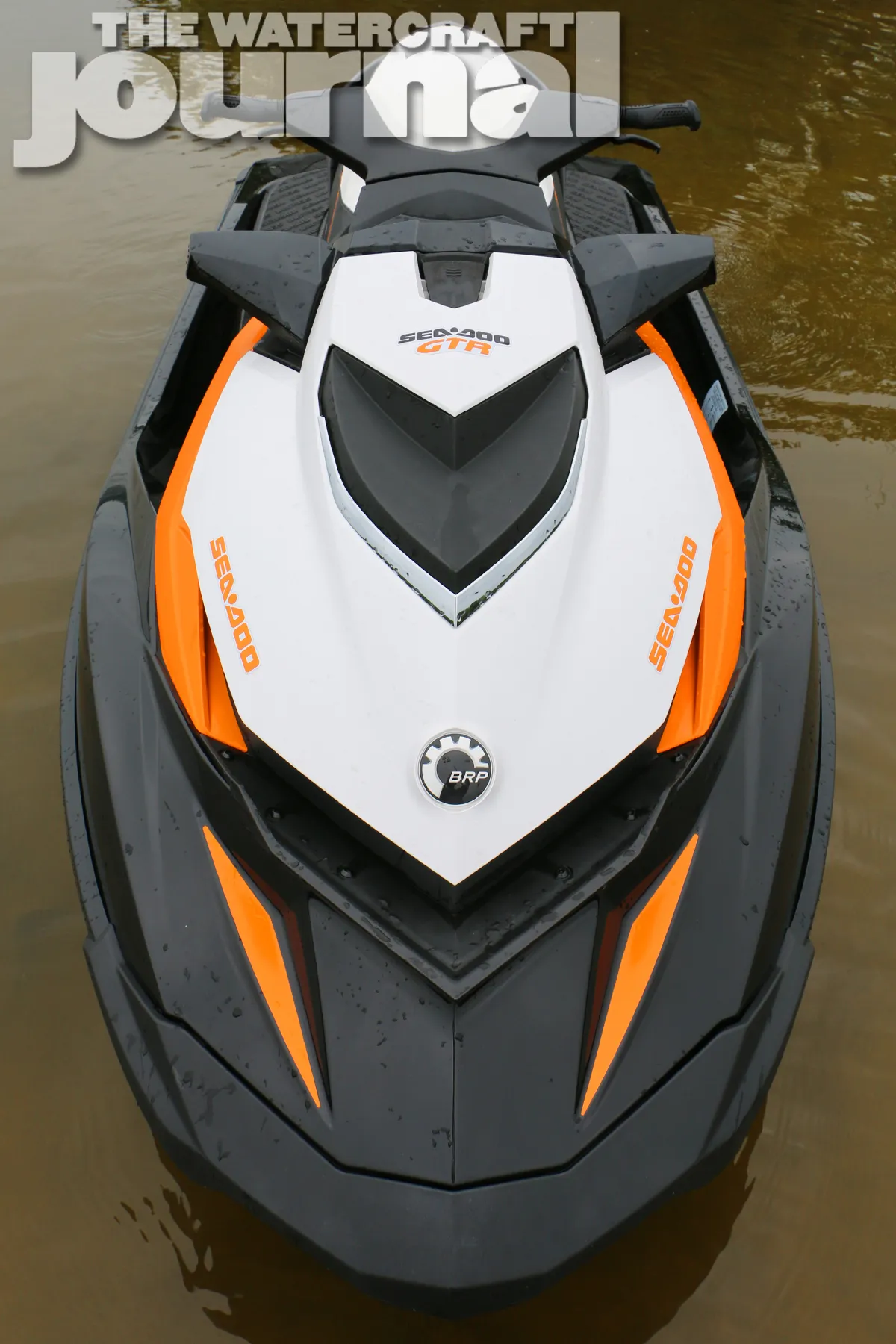


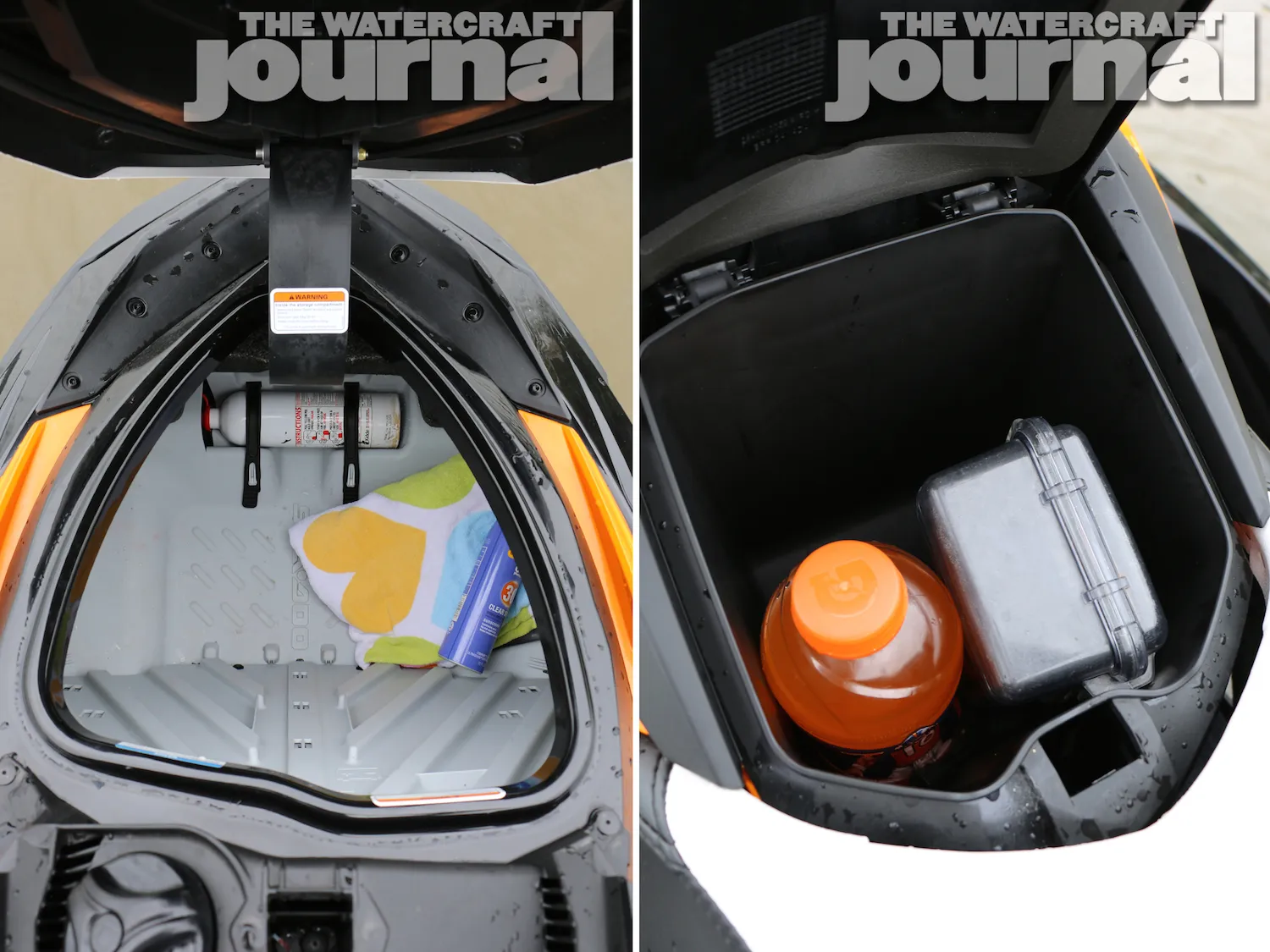
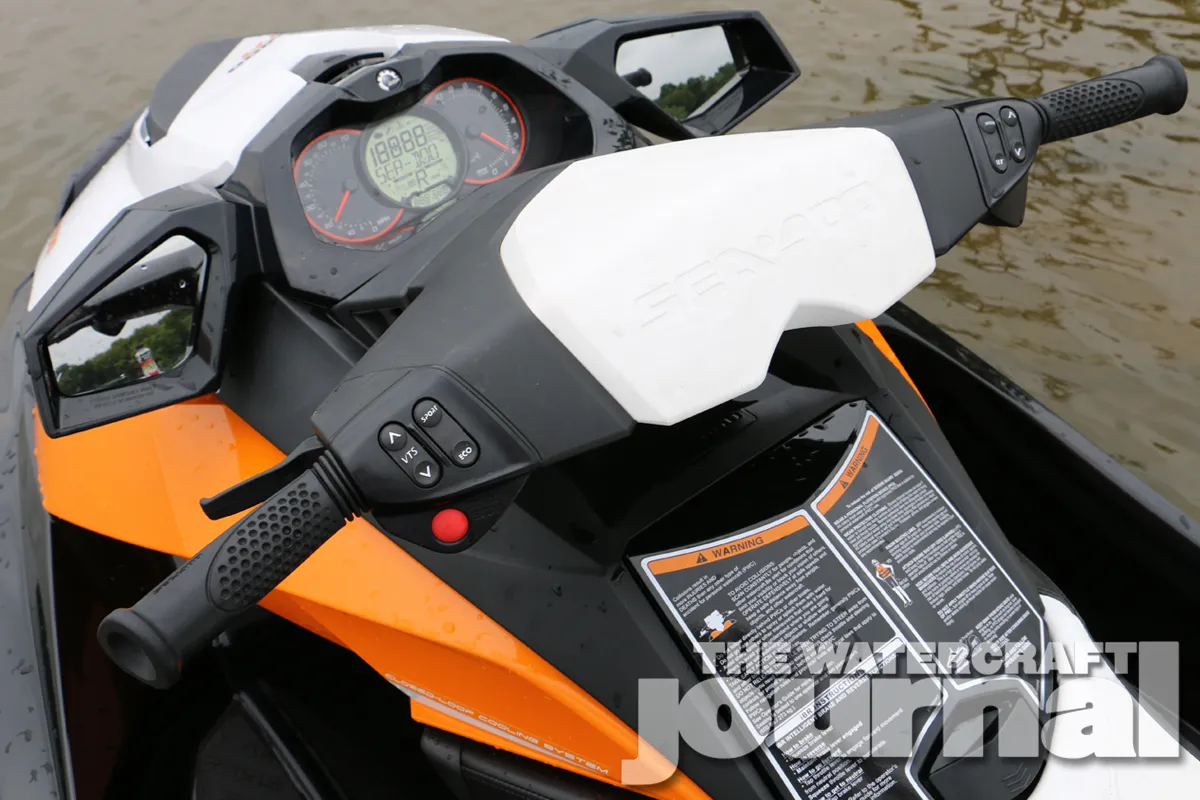



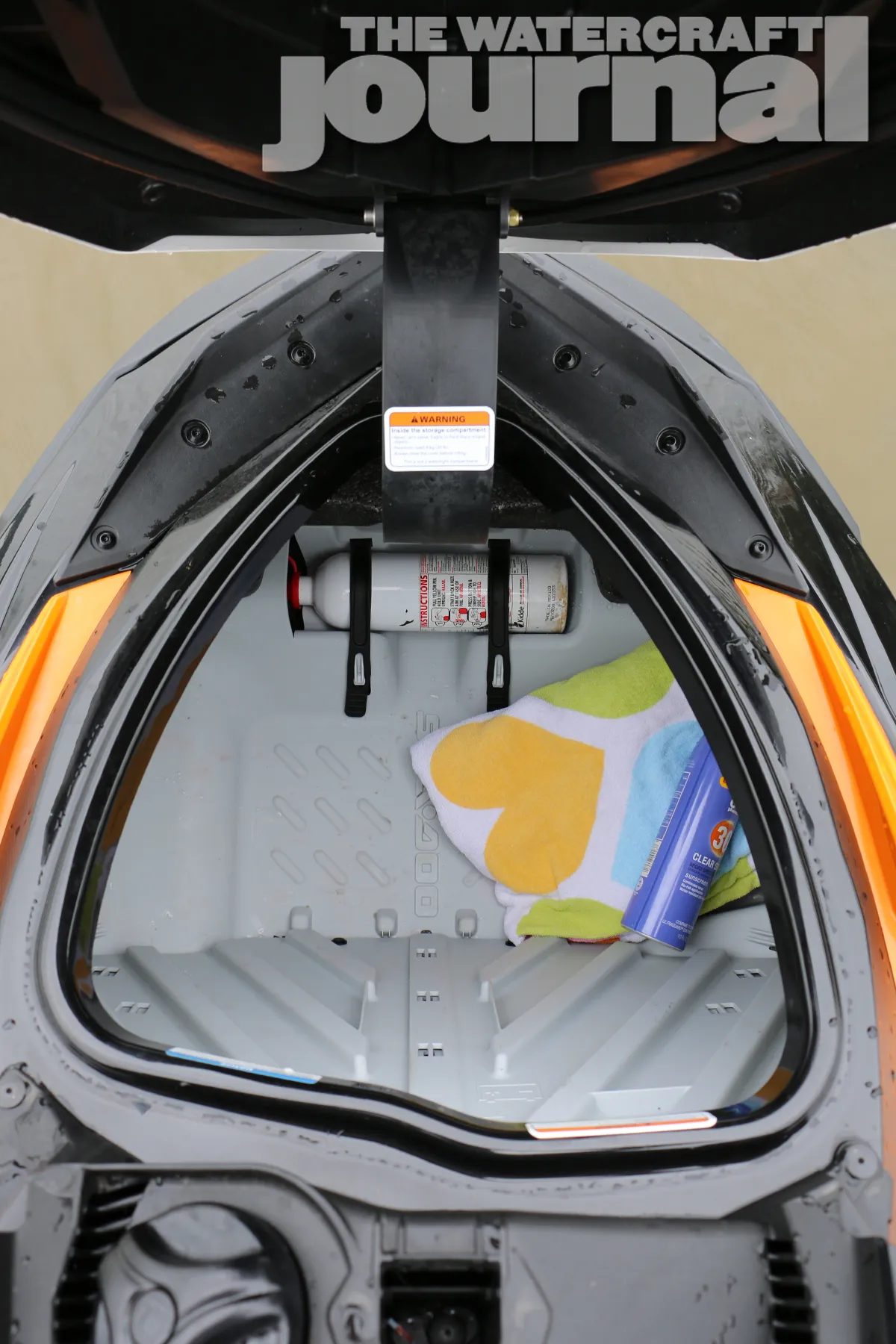

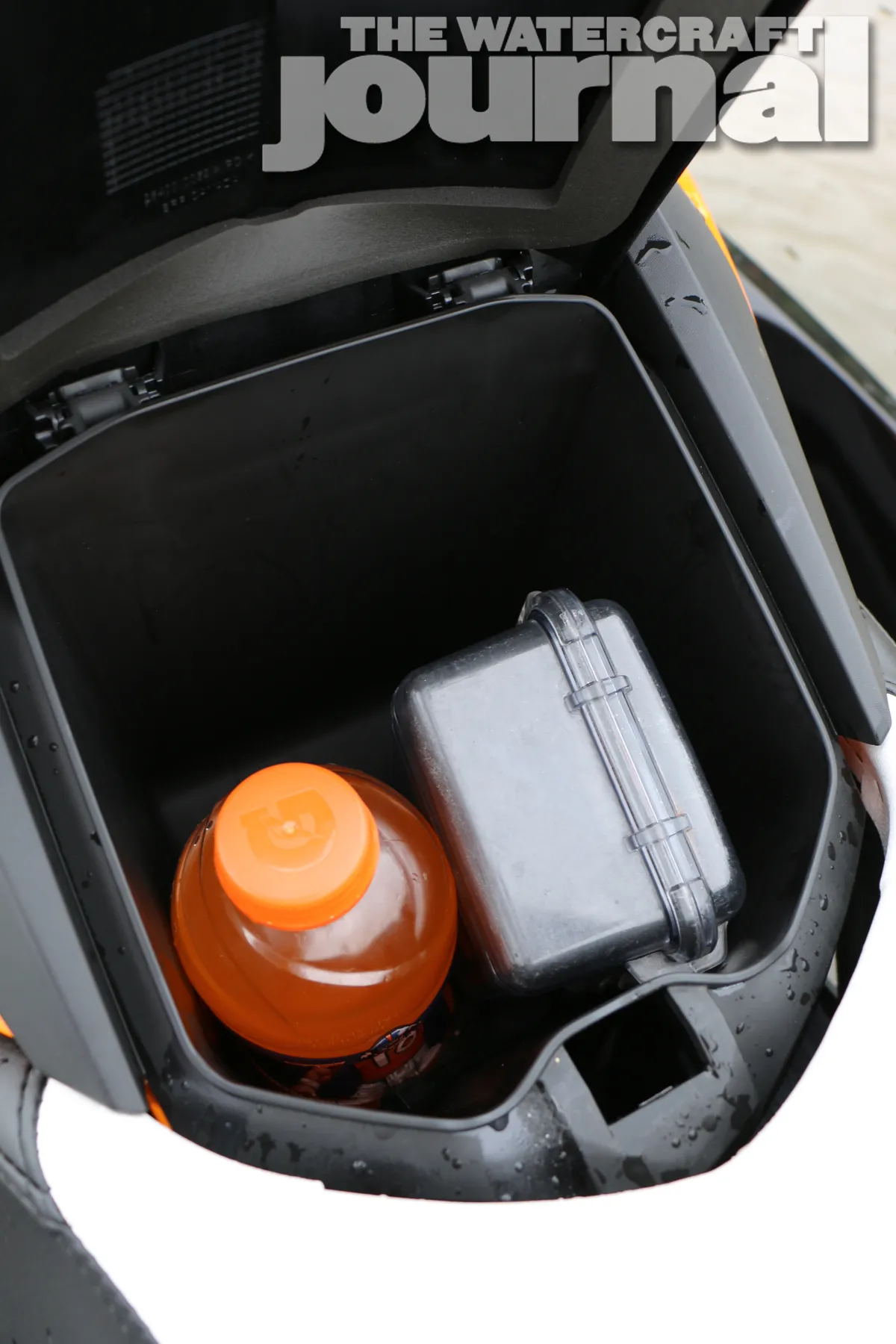




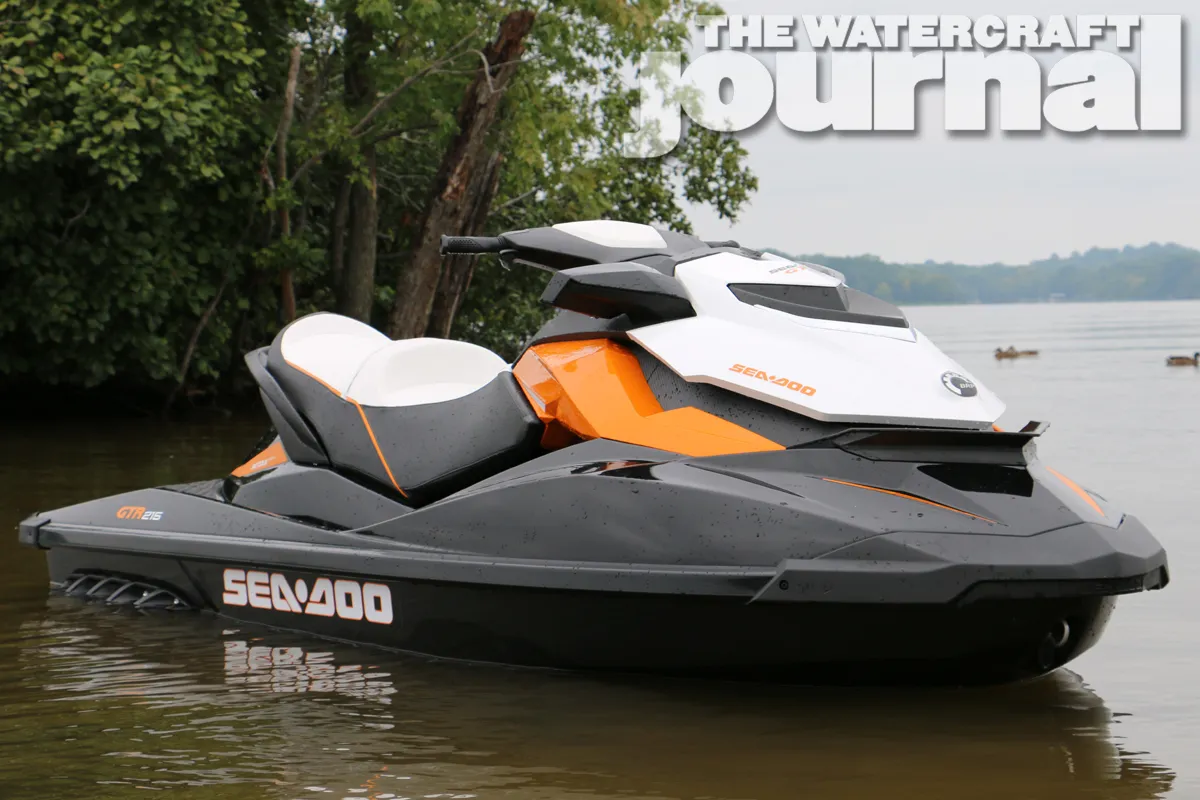




I have a 2012 GTR – and I just L-O-V-E it!!!
It is thirsty is ‘sport’ mode, consuming 16 gallons of fuel in 60 minutes – but ya gotta pay to play!
ECO mode is somewhat stingy on fuel, getting close to the same range as the wifes N/A GTIse, but; I find it seriously BORING.
Biggest limitations on the GTR – all the factory ‘limiters’ built into the ECU… 🙁